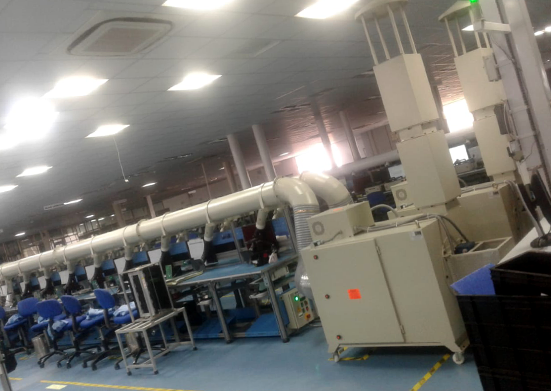Operators doing soldering can be exposed to lead during the process. If handled improperly, lead can have long-term negative consequences on one’s health, including issues with the reproductive system, the digestive system, memory and concentration, and discomfort in the muscles and joints. Operators can be exposed to the fumes by means of ingestion or inhalation.
Hazardous dust and fumes can be produced when soldering with lead (or other metals used for soldering). In addition, using flux containing rosin produces solder fumes that, if inhaled, can result in occupational asthma or worsen existing asthmatic conditions; as well as cause eye and upper respiratory tract irritation.
Today’s world places a great deal of importance on the skill of soldering. From jewellery to construction to electronics, soldering is used in a wide range of sectors during the manufacturing process. As a result, in order to better safeguard workers from potential danger, the health impacts of soldering have been thoroughly researched.
It has also been discovered that extended exposure to soldering fumes can be harmful for people, lead to major chronic health issues, and exacerbate existing chronic diseases.
What are solder fumes?
Solder fumes are metal vapours expelled into the air as a result of the heat + pressure of soldering. The actual process of soldering involves the melting of metals to create a strong joint. As a result, soldering fumes are released into the air as the solder flux transforms into a gas.
Why are Solder Fumes Considered a Health Hazard?
Anything you breathe other than clean air that will likely be detrimental for your health. However, heavy metals found in soldering fumes can be quite harmful to people. Therefore, it is generally agreed that soldering fumes pose a significant risk to occupational health, and employees should be shielded from these side effects using sufficient ventilation, fume extraction, and personal protective equipment (PPE).
Soldering Fumes Health Effects:
The type of metals used in the soldering process has a significant impact on the health effects of soldering fumes. All heavy metals have the potential to be hazardous if consumed, however not all heavy metals are equally toxic, and the toxic dose might vary. For instance, even though iron is an essential part of our diet, those who consume excessive amounts of it might develop iron toxicity. However, lead exposure can result in a wide range of health issues as lead is a highly poisonous substance. People exposed to lead run the risk of developing renal disease, hypertension, and digestive issues even if acute lead poisoning does not manifest. Beryllium, another heavy metal that is utilized in various applications, is known to cause cancer.
The symptoms are generally flu-like, with fever, aches, chills, nausea, and dizziness.
Many other elements and compounds used in the soldering process can be potentially harmful and therefore, it is wise to treat all fumes as toxic and prevent the inhalation of soldering fumes in general.
The Occupational Safety and Health Administration (OSHA) standard requires employers to monitor air quality and restrict soldering fume exposure. The permissible exposure limit (PEL) is strictly enforced by OSHA in order to promote safe working conditions.
Soldering fumes are an occupational health hazard caused by heavy metal dust and smoke that can be breathed in. A worker who does soldering as a part of their job will require a working environment where all protective measures are in place. Some of these measures include:
- Ensuring proper ventilation throughout the shopfloor.
- Have enough PPE for personal protection of every operator.
- Use of soldering fume extractors is a must at every soldering station.
At Powertech Pollution Controls Pvt. Ltd., we provide a variety of mobile and fixed fume extraction devices, under the brand name of FumeKiller® that are highly effective and efficient in the capture and control of fumes, smoke, mist and dust. Our FumeKiller® devices can be used for extraction of fumes in processes like hand-soldering, wave-soldering, dip-tinning, automated soldering stations etc.
Some of our reputed customers include India Nippon, Delta Electronics, Secure Meters, Lucas TVS, Centum Electronics and Rakon India, among others.
For any requirement for soldering fume extractors, Get in Touch with us today and we will work with you to design the most suitable solution for your requirement.





